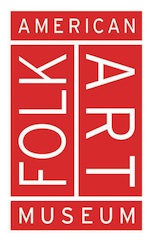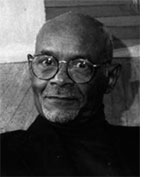Related Research Articles

Anna Mary Robertson Moses, or Grandma Moses, was an American folk artist. She began painting in earnest at the age of 78 and is a prominent example of a newly successful art career at an advanced age. Moses gained popularity during the 1950s, having been featured on a cover of Time Magazine in 1953. She was a subject of numerous television programs and of a 1950 Oscar-nominated biographical documentary. Her autobiography, titled My Life's History, was published in 1952. She was also awarded two honorary doctoral degrees.

Maria Anna Angelika Kauffmann, usually known in English as Angelica Kauffman, was a Swiss Neoclassical painter who had a successful career in London and Rome. Remembered primarily as a history painter, Kauffman was a skilled portraitist, landscape and decoration painter. She was, along with Mary Moser, one of two female painters among the founding members of the Royal Academy in London in 1768.

The American Folk Art Museum is an art museum in the Upper West Side of Manhattan in New York City, at 2 Lincoln Square, Columbus Avenue at 66th Street. It is the premier institution devoted to the aesthetic appreciation of folk art and creative expressions of contemporary self-taught artists from the United States and abroad.

Isabel Bishop was an American painter and graphic artist. Bishop studied under Kenneth Hayes Miller at the Art Students League of New York, where she would later become an instructor. She was most notable for her scenes of everyday life in Manhattan, as a member of the loosely-defined ‘Fourteenth Street School’ of artists, grouped in that precinct. Union Square features prominently in her work, which mainly depicts female figures. Bishop’s paintings won the American Academy of Arts and Letters Award, among other distinctions.

Ilka Gedő was a Hungarian painter and graphic artist. Her work survives decades of persecution and repression, first by the semi-fascist regime of the 1930s and 1940s and then, after a brief interval of relative freedom between 1945 and 1949, by the communist regime of the 1950s to 1989. In the first stage of her career, which came to an end in 1949, she created a huge number of drawings that can be divided into various series. From 1964 on, she resumed her artistic activities creating oil paintings. "Ilka Gedő is one of the solitary masters of Hungarian art. She is bound to neither the avant-garde nor traditional trends. Her matchless creative method makes it impossible to compare her with other artists."
Carol Anthony is an American artist known for her sculptures and paintings. In the 1970s, she became famous for her cartoon-like figure, papier-mache sculptures. After 1978, her work became focused on paintings of still life and landscape genres. She is based in New Mexico.

Elizabeth Nourse was a realist-style genre, portrait, and landscape painter born in Mt. Healthy, Ohio, in the Cincinnati area. She also worked in decorative painting and sculpture. Described by her contemporaries as "the first woman painter of America" and "the dean of American woman painters in France and one of the most eminent contemporary artists of her sex," Nourse was the first American woman to be voted into the Société Nationale des Beaux-Arts. She also had the honor of having one of her paintings purchased by the French government and included in the Luxembourg Museum's permanent collection. Nourse's style was described by Los Angeles critic Henry J. Seldis as a "forerunner of social realist painting." Some of Nourse's works are displayed at the Cincinnati Art Museum.

Sarah Miriam Peale was an American portrait painter, considered the first American woman to succeed as a professional artist. One of a family of artists of whom her uncle Charles Willson Peale was the most illustrious, Sarah Peale painted portraits mainly of Maryland, Pennsylvania, and Washington, D.C. notables, politicians, and military figures. Lafayette sat for her four times.

Hughie Lee-Smith was an American artist and teacher whose surreal paintings often featured distant figures under vast skies, and desolate urban settings.

Kate Cory was an American photographer and artist. She studied art in New York, and then worked as commercial artist. She traveled to the southwestern United States in 1905 and lived among the Hopi for several years, recording their lives in about 600 photographs.
John William "Uncle Jack" Dey was an American self-taught artist who lived and worked primarily in Virginia. Before he began painting, he worked as a trapper, fisherman, lumberjack, barber, and police officer. Dey was a favorite among the neighborhood children, whose toys and bicycles he fixed, and they affectionately nicknamed him "Uncle Jack".

Louise Howland King Cox was an American painter known for her portraits of children. She won a number of prizes throughout her career, notably a bronze medal at the 1900 Paris Exposition and a silver medal at the 1901 Pan-American Exposition in Buffalo.

Miriam Cabessa is an Israeli-American painter, performance and installation artist, winner of the 2022 Israeli Ministry of Culture Lifetime Achievement Award. Cabessa was born in Morocco, raised in Israel, and has lived and worked in New York City since 2000. Her slow action painting has been internationally recognized since 1997 when she represented Israel at the Venice Biennale. Over the past two decades, she has abstained from using brushes, opting to make marks with objects and her body. Her imagery ranges from organic to mechanistic with surfaces that are both haptically handmade and digitally serene. Cabessa has shown extensively in the U.S., Europe, and Israel.
Yona Verwer is a Dutch-born visual artist, living in New York City.
Esther Hamerman was a Polish-born American painter. Hamerman, who was self-taught, has been described as a "leading practitioner" of memory painting. She is considered a folk artist.

Georgia O'Keeffe made a number of Red Canna paintings of the canna lily plant, first in watercolor, such as a red canna flower bouquet painted in 1915, but primarily abstract paintings of close-up images in oil. O'Keeffe said that she made the paintings to reflect the way she herself saw flowers, although others have called her depictions erotic, and compared them to female genitalia. O'Keeffe said they had misconstrued her intentions for doing her flower paintings: "Well – I made you take time to look at what I saw and when you took time to really notice my flower you hung all your own associations with flowers on my flower and you write about my flower as if I think and see what you think and see of the flower – and I don't."

The Young Sabot Maker is an oil-on-canvas painting made by the American artist Henry Ossawa Tanner in 1895. The painting was accepted for the 1895 Paris Salon and was Tanner's second Salon-entered painting.
Adele Earnest (1901–1993) was an American folk art collector and historian, noted as an authority on wildfowl decoys.
Herbert Waide "Bert" Hemphill Jr. was an American collector of folk art.
Nahum Tschacbasov also known as Nahum Lichter, and NahumTschakbassoff, was a Russian-born American painter, printmaker, graphic artist, poet, businessperson, and educator. He used many names including Nahum Lichter, Nathan Richter, H. H. Richter, Hanathan Richter, and Nathan Lichterman. Tschacbasov was a member of "The Ten", a group of expressionist artists.
References
- 1 2 Niemann, Henry Paul (1991). Malcah Zeldis: Her life and evolution of her work, 1959-1984 (PhD). New York: New York University. OCLC 26615137.
- 1 2 Niemann, Henry (Summer 1988). "Malcah Zeldis: Her Art". The Clarion. 13 (2): 49–50.
- ↑ Patterson, Tom (2001). Contemporary Folk Art: Treasures from the Smithsonian American Art Museum. Watson-Guptill Publications. p. 108.
- 1 2 3 4 5 Weissman, Julia (September 1975). "Malcah Zeldis: A Jewish Folk Artist in the American Tradition". The National Jewish Monthly.
- ↑ "Malcah Zeldis". Jewish Virtual Library.
- 1 2 3 Blustain, Sarah (August 7, 1998). "Daughter Reignites Her Mother's Painting Muse After 23-Year Hiatus". The Forward .
- ↑ Waisman, Scott (February 7, 1997). "Every Picture Tells a Different Story". The Forward .
- 1 2 Hartigan, Lynda Roscoe (1990). Made with Passion. Smithsonian American Art Museum.
- ↑ Rosenberg, Willa S. (Summer 1988). "Malcah Zeldis: Her Life". The Clarion. 13 (2): 50.
- ↑ White, John Howell; Kristin G. Congdon (May 1998). "Travel, Boundaries, and the Movement of Culture(s): Explanations for the Folk/Fine Art Quandary". Art Education. 51 (3): 24. doi:10.2307/3193727. JSTOR 3193727.
- ↑ Johnson, Nancy J.; Cyndi Giorgis (November 2000). "Children's Books: Memory, Memoir, Story". The Reading Teacher. 54 (3): 342.
- ↑ Kaywell, Joan F.; Kathleen Oropallo (January 1998). "Young Adult Literature: Modernizing the Study of History Using Young Adult Literature". The English Journal. 87 (1): 105. doi:10.2307/822033. JSTOR 822033.
- ↑ "Miss Liberty Celebration". Smithsonian American Art Museum.
- ↑ "Nude on a couch". American Fold Art Museum. Retrieved 20 July 2013.
- ↑ "Pieta". Smithsonian American Art Museum.
- ↑ "Wake". Smithsonian American Art Museum.
- ↑ "Miss America Beauty Pageant". Smithsonian American Art Museum.
- ↑ "In Shul". American Folk Art Museum. Retrieved 20 July 2013.